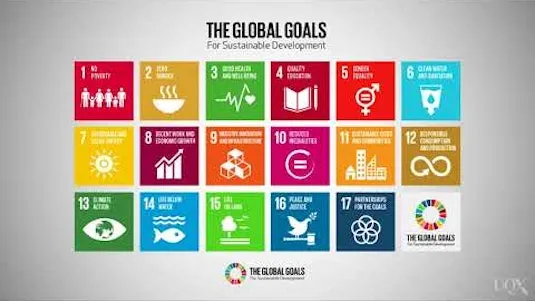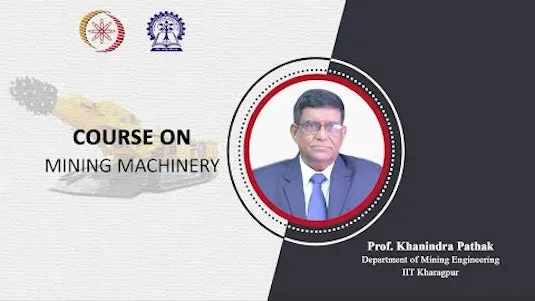
Eocene E - Cretaceous Fireworks w& Bob Miller 
Bob Miller's lecture on the Eocene E-Cretaceous Fireworks covers topics such as Mid Cretaceous Thrusting in the Southern Coast Belt, Basil Tikoff's email on Rocky Mountain Origins, and Foomp and Fireworks Hit and Run. Miller's lecture provides insight into the geological history of the region and its implications. ▼
ADVERTISEMENT
Course Feature
![]() Cost:
Cost:
Free
![]() Provider:
Provider:
Youtube
![]() Certificate:
Certificate:
Paid Certification
![]() Language:
Language:
English
![]() Start Date:
Start Date:
On-Demand
Course Overview
❗The content presented here is sourced directly from Youtube platform. For comprehensive course details, including enrollment information, simply click on the 'Go to class' link on our website.
Updated in [February 21st, 2023]
[Course Overview]
Eocene E - Cretaceous Fireworks w& Bob Miller is an online course that explores the geology of the Eocene and Cretaceous periods. Led by Bob Miller, a renowned geologist, the course covers topics such as mid-Cretaceous thrusting, plutons, strike-slip faults, plate movement animations, and crustal thickness. It also examines the changing concepts of the insular and intermontane superterrane boundaries over time. The course is designed to provide learners with a comprehensive understanding of the geology of the Eocene and Cretaceous periods.
[Why to Learn]
This course is ideal for anyone interested in learning more about the geology of the Eocene and Cretaceous periods. It provides an in-depth look at the geological processes that shaped the Earth during these periods, as well as the changing concepts of the insular and intermontane superterrane boundaries. Learners will gain a better understanding of the Earth’s history and the forces that shaped it.
[Development Paths]
The course is designed to provide learners with a comprehensive understanding of the geology of the Eocene and Cretaceous periods. It covers topics such as mid-Cretaceous thrusting, plutons, strike-slip faults, plate movement animations, and crustal thickness. Learners will gain a better understanding of the Earth’s history and the forces that shaped it.
[Related Learning Suggestions]
Learners interested in furthering their knowledge of the geology of the Eocene and Cretaceous periods may want to consider taking additional courses on the subject. Courses such as Earth Science, Paleontology, and Geology can provide learners with a more in-depth look at the geological processes that shaped the Earth during these periods. Additionally, learners may want to consider taking courses on related topics such as plate tectonics, volcanology, and seismology.
[Applications]
After taking this course, students should be able to apply the concepts learned to their own research. They should be able to understand the importance of thrust faults, plutons, and strike-slip faults in the formation of the Eocene-Cretaceous boundary. They should also be able to use plate movement animations to better understand the dynamics of the boundary. Additionally, they should be able to use the information presented in the course to interpret the ages of plutons in the North Cascades and Mount Stuart. Finally, they should be able to use the concepts of Umhoefer and Miller's fault restoration to better understand the boundaries between the insular and intermontane superterranes.
[Career Paths]
The career paths recommended to learners from this course are:
1. Geologist: Geologists study the physical structure and composition of the Earth, including its rocks, minerals, and other materials. They use their knowledge to explore for and develop natural resources, such as oil and gas, and to locate and assess potential hazards, such as earthquakes and landslides. Geologists are also involved in environmental protection and conservation efforts. The demand for geologists is expected to grow in the coming years due to the increasing need for energy resources and the need to protect the environment.
2. Petroleum Engineer: Petroleum engineers design and develop methods for extracting oil and gas from underground reservoirs. They also develop new technologies to improve the efficiency of oil and gas production. Petroleum engineers are in high demand due to the increasing demand for energy resources.
3. Geophysicist: Geophysicists use physical principles to study the Earth's structure and composition. They use seismic, gravity, magnetic, and electrical methods to map the subsurface of the Earth and to locate and assess potential energy resources. Geophysicists are in high demand due to the increasing need for energy resources and the need to protect the environment.
4. Environmental Scientist: Environmental scientists study the effects of human activities on the environment. They use their knowledge to develop strategies to protect and conserve natural resources, reduce pollution, and mitigate the effects of climate change. The demand for environmental scientists is expected to grow in the coming years due to the increasing need to protect the environment.
[Education Paths]
The following are three degree paths recommended to learners interested in furthering their education in geology:
1. Bachelor of Science in Geology: This degree program provides students with a comprehensive understanding of the Earth’s physical structure, composition, and history. Students will learn about the processes that shape the Earth’s surface, the formation of rocks and minerals, and the evolution of the Earth’s climate. This degree is becoming increasingly popular as the demand for geologists grows in the energy, mining, and environmental sectors.
2. Master of Science in Geology: This degree program provides students with an advanced understanding of the Earth’s physical structure, composition, and history. Students will learn about the processes that shape the Earth’s surface, the formation of rocks and minerals, and the evolution of the Earth’s climate. This degree is becoming increasingly popular as the demand for geologists grows in the energy, mining, and environmental sectors.
3. Doctor of Philosophy in Geology: This degree program provides students with an in-depth understanding of the Earth’s physical structure, composition, and history. Students will learn about the processes that shape the Earth’s surface, the formation of rocks and minerals, and the evolution of the Earth’s climate. This degree is becoming increasingly popular as the demand for geologists grows in the energy, mining, and environmental sectors.
These degree paths provide learners with the opportunity to gain a comprehensive understanding of the geological processes that shape the Earth. With the increasing demand for geologists in the energy, mining, and environmental sectors, these degree paths are becoming increasingly popular.
Course Provider

Provider Youtube's Stats at AZClass
Discussion and Reviews
0.0 (Based on 0 reviews)
Explore Similar Online Courses

PostgreSQL Tips From a Pro Cloud Simplified

Ohio Real Estate Salesperson Exam: Study Guide & Practice

Python for Informatics: Exploring Information

Social Network Analysis

Introduction to Systematic Review and Meta-Analysis

The Analytics Edge

DCO042 - Python For Informatics

Causal Diagrams: Draw Your Assumptions Before Your Conclusions

Whole genome sequencing of bacterial genomes - tools and applications

Mining Engineering

The Future of Mining?


Start your review of Eocene E - Cretaceous Fireworks w& Bob Miller